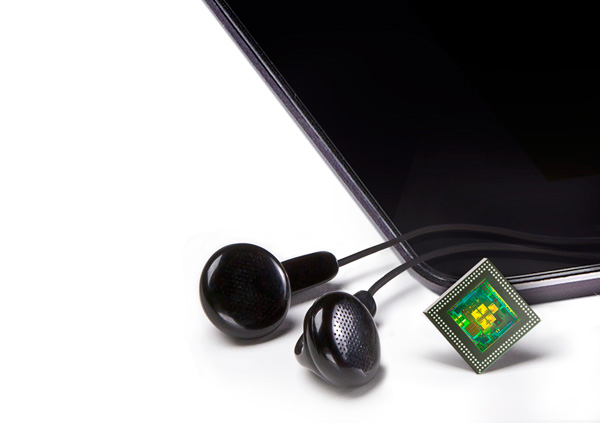NVIDIA's Tegra 3 Launched: Architecture Revealed
by Anand Lal Shimpi on November 9, 2011 12:34 AM ESTASUS' Transformer Prime: The First Tegra 3 Tablet
With Tegra 2, Motorola was the primary launch partner both for smartphones and tablets. Since then, ASUS has risen in the ranks and is now a serious competitor in the Android tablet space. It's no surprise that the first Tegra 3 tablet out of the gate is ASUS' Transformer Prime.

ASUS will launch the Transformer Prime in the US before the end of the year. The tablet's specs are below:
| Tablet Specification Comparison | ||||||
| ASUS Eee Pad Transformer | ASUS Eee Pad Transformer Prime | Apple iPad 2 | Samsung Galaxy Tab 10.1 | |||
| Dimensions | 271mm x 175mm x 12.95mm | 263 x 180.8 x 8.3mm | 241.2 x 185.7 x 8.8mm | 256.6 x 172.9 x 8.6mm | ||
| Display | 10.1-inch 1280 x 800 | 10.1-inch 1280 x 800 Super IPS+ | 9.7-inch 1024 x 768 IPS | 10.1-inch 1280 x 800 PLS | ||
| Weight | 675g | 586g | 601g | 565g | ||
| Processor | 1GHz NVIDIA Tegra 2 (2 x Cortex A9) | 1.3GHz NVIDIA Tegra 3 (4 x Cortex A9) | 1GHz Apple A5 (2 x Cortex A9) | 1GHz NVIDIA Tegra 2 (2 x Cortex A9) | ||
| Memory | 1GB | 1GB | 512MB | 1GB | ||
| Storage | 16GB + microSD card | 32GB/64GB + microSD slot | 16GB | 16GB | ||
| Pricing | $399 | $499/$599 | $499 | $499 | ||
Final Words
At a high level Tegra 3 doesn't surprise us much. The improved GeForce GPU should deliver tangible performance gains both through increased operating frequency and more pixel shader hardware. CPU performance should also be better than Tegra 2 based designs thanks to an increase in clock speed, the inclusion of MPE and the availability of more cores for threaded applications. In the move from one to two cores we saw significant performance increases across the board in Android. I don't expect that we'll see gains of a similar magnitude in moving from two to four cores, but there will be some benefit.
For the majority of use cases I believe NVIDIA has done the hardware homework necessary to extend battery life. Individual cores can now be power gated and the companion core should do most of the lifting while your device is locked or mostly idle, processing background tasks.
How much of an impact we'll actually see from all of this remains to be seen. We hope to have our hands on the first Tegra 3 hardware in the coming weeks, so before the year is up we'll hopefully have some answers.

















94 Comments
View All Comments
mwarner1 - Wednesday, November 9, 2011 - link
Did you actually read the article?whsmnky - Wednesday, November 9, 2011 - link
As stated in the article, they'll have more once they have something in hand like they have in every other item review. Without physically having the product to test, I'm curious how you would expect them to provide ACTUAL battery life numbers to be able to hold anyone accountable to anything.MrSewerPickle - Wednesday, November 9, 2011 - link
Yeah I agree with both of the replies to this original comment. And please do NOT change the content, format or delivery of any of your Reviews or articles Anand. They are top-notch and rare on tech websites. Perfectly covered BTW and the Tegra 3 GPU is indeed a concern, in my humble opinion.cjs150 - Wednesday, November 9, 2011 - link
Perfect for a low power, low heat, no noise HTPC?Zotac have released the incredibly cute Nano AD10 (and one with Via chip in).
NVidia come on you can beat them with something as cute but better (no fan for starters!), you did tease with something like the nano box about a year or 2 ago
krumme - Wednesday, November 9, 2011 - link
HTPC: you can already have bobcat based, no fan solutions. All running x86. At around the same size. Would be nice with some benchmarks comparing this to bobcat, especially fpu part. LOL.iwod - Wednesday, November 9, 2011 - link
Would love to known how it perform against the A5.roundhouse_c - Wednesday, November 9, 2011 - link
Here is another article:
http://www.slashgear.com/tsmc-starts-28nm-producti...
Tegra 3 on 28nm die will be out sooner then what's being posted here.
eddman - Wednesday, November 9, 2011 - link
Kal-El+ must be 28 nm. It wouldn't make sense if it isn't.ezekiel68 - Wednesday, November 9, 2011 - link
From the article you linked:"AMD and NVIDIA saying they will be using the 28nm process silicon in
their next-gen graphics products."
The near-term timeframe is in reference to NVIDIA's next generation Kepler GPUs, not their mobile device SOCs. See also:
http://vr-zone.com/articles/nvidia-28nm-kepler-pro...
eddman - Wednesday, November 9, 2011 - link
True, but it doesn't mean that they are NOT working on a 28 nm tegra. 28 nm GPUs will start rolling out in Q1 2012, so a 28 nm tegra 3+ in mid 2012 isn't unrealistic.